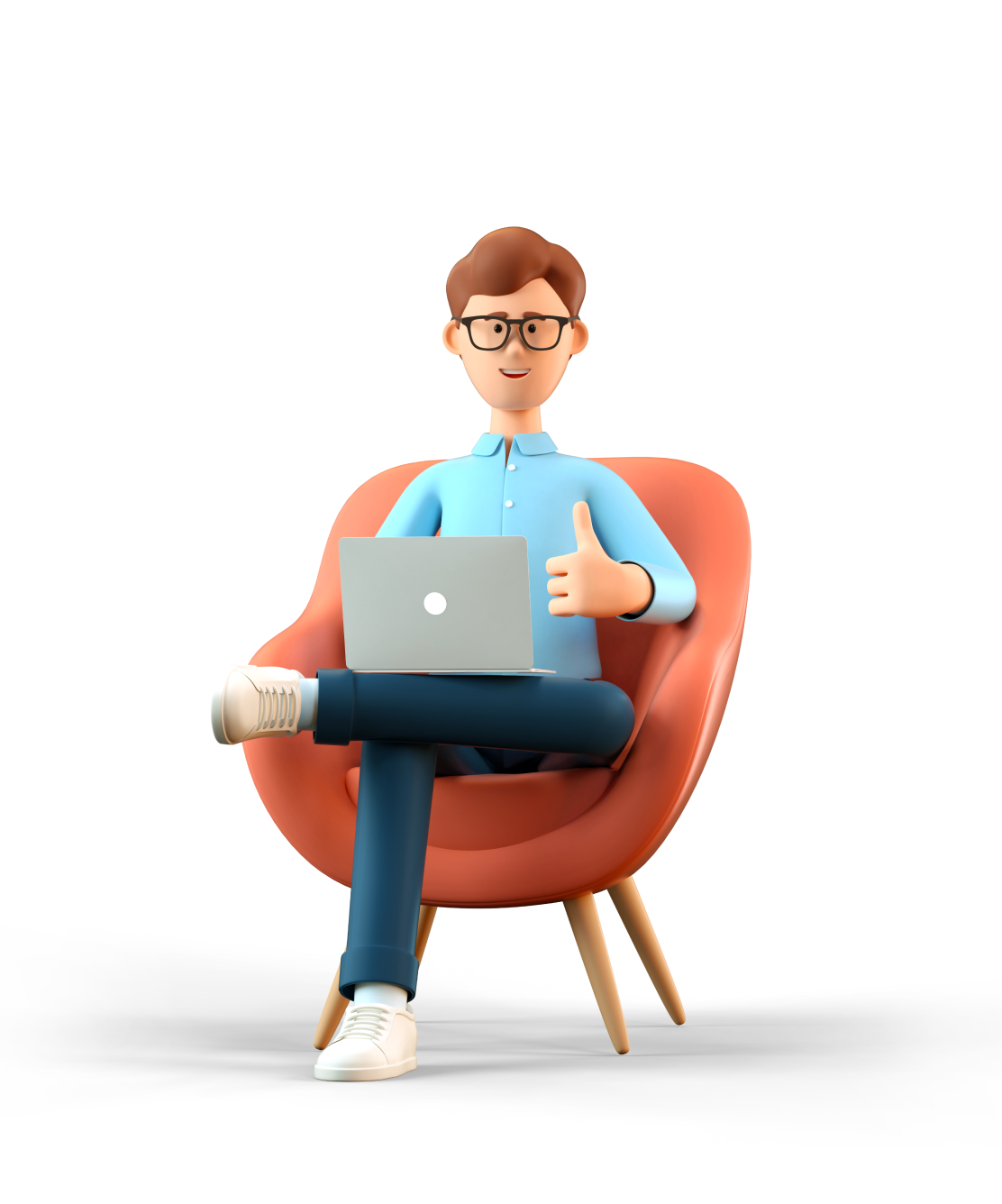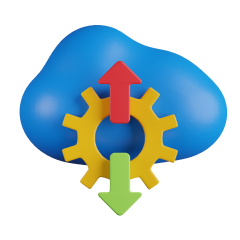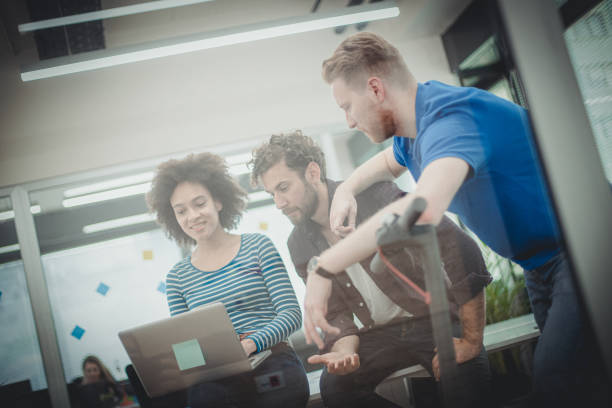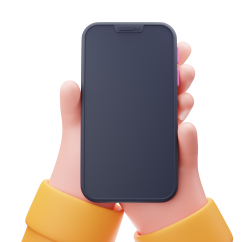
Got a Project? Tell us about it!
We are a leading custom software development agency focused on web, mobile app development & SaaS application development & MVP Development.
The SAAS Development Lifecycle
- Custom software development
- Development
- SaaS Application Development
- Technology
Our experienced team of UX/UI designers and developers will help you stand out with a beautifully designed UX/UI.
What is SAAS Development
The SAAS Development Lifecycle
 A SaaS product differs significantly from traditional software in terms of its life cycle. It entails the following procedures:
A SaaS product differs significantly from traditional software in terms of its life cycle. It entails the following procedures:
Our experienced team will help you stand out with a bespoke, flexible, and scalable software application for your business.
1. Performance
During the forecasting phase, the development of a SaaS project is identical to the development of other products. First, determine the project's size from a business perspective. It is critical for SaaS developers to think critically at this point because doing so will save you from failure. Investors, managers, marketing professionals, and architects should all be consulted.2. Grade
Following that is the platform evaluation stage. The cloud platform's architecture and functionality must match the project's requirements and contribute to the project's success. The platform must be able to scale and recover in the event of a disaster.3. Planning
The planning phase entails making all significant SaaS project decisions that will affect the project's implementation. The requirements for the project's terms of reference must be formalized at this point. All stakeholders must formalize this aspect. You should also plan and create a timeline for the project. At this point, a risk-mitigation strategy is also necessary.4. Subscription
The next step is to register with your chosen cloud service provider. At this point, the final architectural and pricing decisions are made. It's critical that you plan your subscription management strategy carefully. Backups and the possibility of disaster recovery are also included in this phase.Our experienced team of will help you stand out with a bespoke, flexible and scalable software application for your business.
5. Development
The most time-consuming stage of development, but it can't begin until the others have been completed. At this point, the development environment has been set up, testing has been completed, and functionality and security policies have been added. Additionally, issues with support service synchronization and testing are being addressed.6. Operations
The operational stage – that is, the operation – begins after the completion stage. It's important to look at all of the product's important features and how well the employees interact with it. It's possible that you'll need to make more changes, fix bugs, and retest the system. These are vital components that must not be overlooked. Following this procedure will increase the project's chances of success significantly.Important Component of SAAS
 We've identified the five most important components of the SaaS architecture based on our experience providing SaaS application development services. In other words, these are the five most critical stages in the development of SaaS software.
We've identified the five most important components of the SaaS architecture based on our experience providing SaaS application development services. In other words, these are the five most critical stages in the development of SaaS software.
1. Market Research and Concept Development
Market research and competitor analysis are the first steps in any software development project. Additionally, as a business owner, you must make certain that your target audience and value proposition are clearly defined. Understanding the importance of research and analysis in the development of SaaS applications is understandable given the fierce market competition in the SaaS industry. Based on the research findings, managers and stakeholders may decide to start the ideation phase together. We are primarily concerned with validating the project concept as well as the value proposition during the ideation phase.Our experienced team of android developers will help you stand out with a efficient and fast mobile app for your business.
2. Product Discovery and Roadmap Development
Once we've established clear objectives and project goals, we move on to product discovery. Following ideation, product discovery is the next step, which entails employing effective methodologies to comprehend customer behavior and develop products that meet their requirements. We now have access to a number of advanced product discovery tools that use AI and machine learning algorithms to figure out what customers want. The next step is to create a well-organized project roadmap that is laser-focused on achieving the defined SaaS application development project goals and objectives. A roadmap will typically include the proposed timeline as well as the execution strategy for various stages of development.3. Choosing The Tech Stack
We'll move on to the most important part of the process after we've established the project roadmap: deciding on the technology stack for our SaaS project. Other factors such as budget, quality, cost, and agility are considered at this stage. Numerous tools, frameworks, and SDKs are available for developing SaaS applications. On the other hand, selecting the right ones is critical to ensuring that you are on track to meet your project objectives. For instance, you don't want to waste money on tools that won't help you achieve your goals in the long run. Simultaneously, you must avoid paying exorbitant prices by choosing overpriced tools. There appear to be several tools on the market that provide all of the advanced features at a low cost. We use open-source tools, frameworks, and SDKs to create high-quality cloud-based enterprise applications. Our development team has a lot of experience with cloud computing platforms like AWS, Google Cloud Platform, and Azure Cloud.Our experienced team will help you stand out with a bespoke, flexible, and scalable SaaS application for your business.
4. Design and Development of UI/UX
To create responsive and user-friendly app interfaces, we must first hire experienced UI/UX designers. Wireframing, in which we sketch the basic appearance of various screens, is typically the first stage of the design process. After that, we create functional mockups and prototypes to test an application's actual look and feel. After we've finalized the UI/UX design, we'll move on to the development phase. We work diligently on the backend and frontend components of an application during each stage of the development process.5. Quality Testing and Debugging
Debugging is the last step in the software development lifecycle. However, we must perform it at all levels of production in order to achieve maximum efficacy. Rigorous software testing using advanced automation testing tools is also required to detect and fix critical bugs in the application. We have QA engineers who are experts at performing a wide range of software tests to find bugs, glitches, and design flaws. Our developers use agile methodologies to fix these bugs and deliver consistent app performance across multiple devices. Our QA engineers use advanced automation testing tools like JMeter, Selenium, and Katalon Studio to perform 360-degree software testing.SAAS Development Best practices
1. Working Backwards
Building the right product is more important than building the right product. Users' constant companions are great SaaS products. They solve a customer's problem and fulfill their requirements. The best products are made when the customer's problem is thoroughly understood and a solution is devised. The customer is the starting point for the working backward method. Leading companies use this method to develop new products as well as add features to existing ones. The technology stack and the specifics of the implementation are secondary considerations. The most important thing is to find a solution for your customer's problem. Interact with customers who you think will buy your product and ask for their feedback.2. Mobile-First & Design First Methodologies
The consumerization of software products results in nothing less than a rich experience for SaaS products. Users expect excellent experiences from B2B and B2C SaaS products today because they are constantly on the move and connected. An integrated, interconnected, and consistent user experience is now required of a SaaS product. Slack, Dropbox, Amazon, and Google are examples of product-driven businesses that have earned consumer trust. Consistency and integration are critical because customers are unlikely to want to install a large number of enterprise software apps. Customers abandon products with a long learning curve or complex because they want instant gratification. During the development of SaaS products, users' hooks must be created. These hooks can help users get started and complete tasks on their own. Users will find it easier to navigate if you take a mobile-first and design-first approach. It fosters empathy for the software's users while also assisting in its smooth operation. Users should be able to see the results as soon as they log into your SaaS application. Every customer interaction is simplified with the design mindset, allowing them to accomplish more in less time.3. Launch on a regular basis
You can start testing your product with real users once your basic product requirements have been established and approved. Get your customers on board by allowing them to try out your product. You may be able to add more value to your product in the long run by releasing incremental features on a regular basis. Your quick implementation of value-added features will benefit your product. Customers can do more with a product if they have access to a high-quality feature in one month rather than six months. There is always a tradeoff between quality and timeliness when it comes to features. A good SaaS development team strikes a good balance between the speed with which critical features are delivered and the quality with which those features are delivered. A thoroughly tested SaaS product necessitates a high level of flexibility, rapid interactive development, and constant customer communication. Early feedback and experimentation are essential for creating a product that customers will enjoy.4. Products Prioritization
A SaaS solution that tries to fix everything for everyone ends up solving nothing for anyone in its early stages. Prioritizing product features is critical for creating the best SaaS product. A small number of powerful customers cannot dictate product development. It has the potential to disrupt the entire product strategy on a regular basis. The RICE framework for feature prioritization can be used to successfully complete SaaS development. Adding too many features too soon may cause users and salespeople to become confused. It's easier to increase SaaS product acceptance when you have a good positioning. Reach, Impact, Confidence, and Effort (RICE) are acronyms for Reach, Impact, Confidence, and Effort.5. The Amazon Approach
Amazon, Google, and Apple, among the most effective companies, create processes to guide their product development. SaaS product development requires a pragmatic approach to create strong value for customers and product development teams. All stakeholders must be brought together during the development of your SaaS product, and clarity must be created for the following:- Who are you constructing for? Who are the people you want to sell to?
- What is the issue that your product addresses?
- Who: Who are the people who will be impacted by the problem you're trying to solve?
- A single line Description: Our product is a (describe the product or solution)
- Solution: Describe how your product addresses the problem.
- Gaps: What are some of the current issues that customers are having?
- Our product/solution stands out (a key point of competitive differentiation)
- Ease of use: How easy is it to start using your product?
- Final thoughts and a call to action: Summarize the information and assist users in getting started.
6. Make Provisions for the Next Generation
Customers of a successful SaaS product have a long-term goal in mind. Salesforce created its CRM product not only with SaaS in mind, but also with a customer vision and roadmap in mind. It offered a complete ecosystem to its users and clients. In order to respond to future needs, your SaaS product development must be able to change, adapt, and reinvent itself. What do you think your product will look like in three months? This might be a less difficult question to answer than "How will your product look in three years?" Successful SaaS product companies can answer both of these questions with reasonable certainty.7. Differentiation Strategy
New SaaS products are released every day, but the majority of them do not meet market demand. Products that do not meet the criteria and do not delight customers are discarded. Competitive benchmarking aids a business in determining what products are currently available on the market. They can plan a strategy for differentiating products and offering clients more competitive value propositions. Competitive products give you a good idea of what your customers already own. If your product does not offer a significant improvement over the competition, customers will be hesitant to switch. Businesses can create better SaaS products by developing a thorough understanding of existing products and the market ecosystem.8. User Behavior Monitoring
Product features can be built after understanding user patterns. User behavior can also help businesses anticipate their customers' needs. Twitter, for example, discovered that many of its users spend time reading articles and used the data patterns to recommend content to them and create a bookmarking feature. Customer-driven development boosts SaaS product adoption, aids organizations in developing customer-friendly features, and improves overall product quality by leveraging user data. By analyzing customer interactions, businesses can learn about the important elements needed to serve customers, study behavioral trends, and provide ongoing value to the product. SaaS solutions change based on how they're used, technological advancements, and customer demands.9. Turn on the security system.
The growing use of SaaS software, wireless networks, and mobile devices, among other things, creates a slew of endpoints that malicious users can take advantage of. Enterprise SaaS software's security features must be carefully designed. By running SaaS software with the fewest privileges, you can avoid the web's veiled threats. The security aspects of SaaS product development are becoming increasingly important for businesses as the number of enterprise applications, integrations, and business user mobility grows. The super admin users are responsible for maintaining a complete audit trail of events, user activities, and application usage. Any unusual access or activity should be reported to the system administrators so that they can take corrective action.10. A/B Testing
A/B testing, also referred to as split-run testing or bucket testing, is a useful tool for assessing user experience. Using user feedback, A/B testing allows you to compare two variants A and B. If you need to compare two designs for customer sign-up, for example, you could evaluate the click rates of the two variants by assigning them to users at random. This strategy can also be used to guide the development of a variety of product features that can be tested with different designs. These tests can be used to examine how users interact with features and better understand how usable they are. An effective product development strategy used by experienced teams is involving users for input, feedback, and testing.How Can Our Services Help you Build a SAAS Application?
Conclusion
Each SaaS project is different, and it's impossible to anticipate all potential issues. Taking into account the most important requirements for SaaS solutions, the demands of your target industry, and client feedback, on the other hand, will help you avoid a lot of potential pitfalls. The SaaS development lifecycle encompasses the creation, maintenance, and support of software as a service. As a result, the SaaS development lifecycle has become the gold standard for development companies around the globe. However, you can improve its effectiveness by including your experience and industry context. Creating a SaaS product is a valuable business idea that will grow in popularity in the future. A reliable and competent SaaS development company like Mobirevo can assist you in researching the issue and implementing vital features so that you do not fall into any traps. Get in touch with us, let’s talk about making your SaaS ideas a reality! Our dedicated development team has extensive experience. You can contact us today to get a free quote. Our team at Mobirevo strives to provide unrivaled services to all of our valued clients. You can also check out our case study page to see our client’s portfolio and better understand the quality of products we deliver. Also, contact us if you have any questions about our services, and we will get back to you as soon as possible. Want to receive more content like this? You can signup for our newsletter, which features curated opinions, and product discovery tools for building remarkable digital assets. If you sign up for our weekly newsletter, you will be the first to know when we publish awesome content like this. You can also visit our blog to see other content created with love by our amazing team.Got a Project? Tell us about it!
We are a leading custom software development agency focused on web, mobile app development & SaaS application development & MVP Development.
Subscribe to Our Newsletter
Join over 5,000 enterpreneurs and businesses who already have a head start.
Got a Project? Tell us about it!
Our Engagement Models
OUR PRESENCE
BLOCKCHAIN
OTHER SERVICES WE OFFER
CONTACT
Copyright © 2022 Mobirevo Software & Technologies LTD a company duly registered with CAC with RC Number: 1756190. All rights reserved.

Got a Project? Tell us about it!
We are a leading custom software development agency focused on web, mobile app development & SaaS application development & MVP Development.








